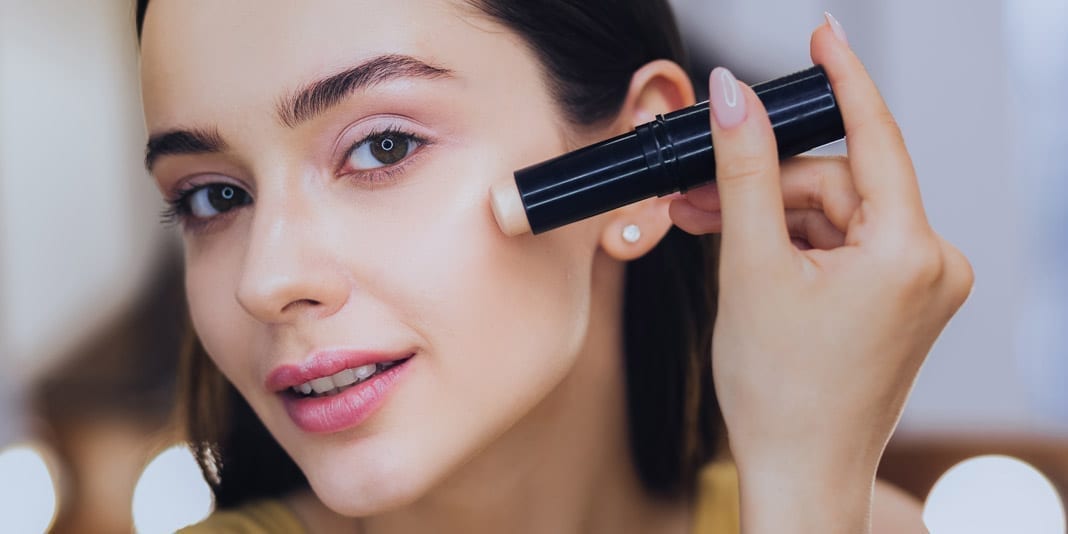We need the best under-eye concealer because our busy lifestyles prevent us from looking radiant every day. And those under-eye circles are so tricky because they appear instantly and it takes you so much effort to make them fade away. We know that it’s a problem for all women of all ages.
With so many concealer options insisting that they are the best for you, how do you know which one is right for you? Consider this article your go-to resource for all things concealer, with tips on how to find the best concealer for your needs.
Let’s talk about the different types of concealer. We all know that not all concealers are alike nor serve the same purpose just by taking a look at the makeup aisle.
Let’s talk about the basic formulas:
STICK CONCEALERS
Stick concealers have a terrible reputation of being dry on the skin and cakey. But because they’re compact, they’re easy to carry around and use on the go. You’ll thank yourself for that decision when one of those wild pimples appear, and you need a quick fix.
LIQUID CONCEALERS
Liquid concealers are the most popular. They are too many to choose from it’s overwhelming even they need their own category:
Concealers in a tube:
They often have a thicker formula and commonly used for under eye concealing, and they tend to be thick and sticky.
Concealers with an applicator:
Usually, concealers that come with a wand applicator offer much more precision, though some say they can be unhygienic. That’s only true if you share your makeup. On the other hand, the thinner texture offers a much smoother blending on the skin.
Cream concealers:
They come in a pot and usually require a finger or brush for dipping. Cream concealers are “heavy duty” actors of makeup with some being almost waxy and creamy, offering a much stronger coverage.
Color correcting concealers:
It’s debatable whether color correctors should be considered concealers. To me, they are because they serve almost the same purpose of hiding or highlighting any part of your skin.
To answer the big question “how will I know which concealer is right for me” is another question, how do you want the concealer to work on you? Uses for concealers are endless the best concealer depends on what your goals are (plus your skin type of course)
Concealing imperfections and spots:
Spot imperfections are irritating, but they are also the easiest to take care of. This is where stick concealers shine because as mentioned above, they are easy to use and offer great coverage, plus safer to carry around. If your skin is not a fan of stick concealers, opt for a pigmented liquid concealer. Because it’s a thinner consistency, it will help you avoid adding more texture and product than necessary.
Neutralizing discolorations:
If you have any significant discoloration areas such as redness from acne, scarring, darkness or any hyperpigmentation like a birthmark, color correctors will do the trick. While they also come in different formulas, I would highly recommend a liquid version as they blend flawlessly to your skin. Remember, you’ll need a regular skin-tone concealer on top, so it’s essential to add as little texture as possible.
Under-eye concealer:
Undereye darkness is the trickiest to cover up, and your skin also tends to be slightly dry in those areas. So the thick and creamy concealer provides full coverage to look radiant and awake!
Contouring:
Contouring is the only use for concealer where any type would do the trick. Just make sure to pick the right color, which is about two shades deeper than your skin tone. Also, make sure to test the concealer on your collarbones for a more precise match. Start by picking two concealers to start with.
Out of all the categories choose the top two or three that will accomplish your desired results, and then select the right shade for you. Or you can always get one of everything, and you’ll always be covered!
TL;DR: Stick concealer (blemishes) Liquid concealer (highlighting and fixing mistakes) Cream concealer (for under-eye emergencies) Color corrector (green hides redness, orange hides blue, and yellow for purple spots)




































